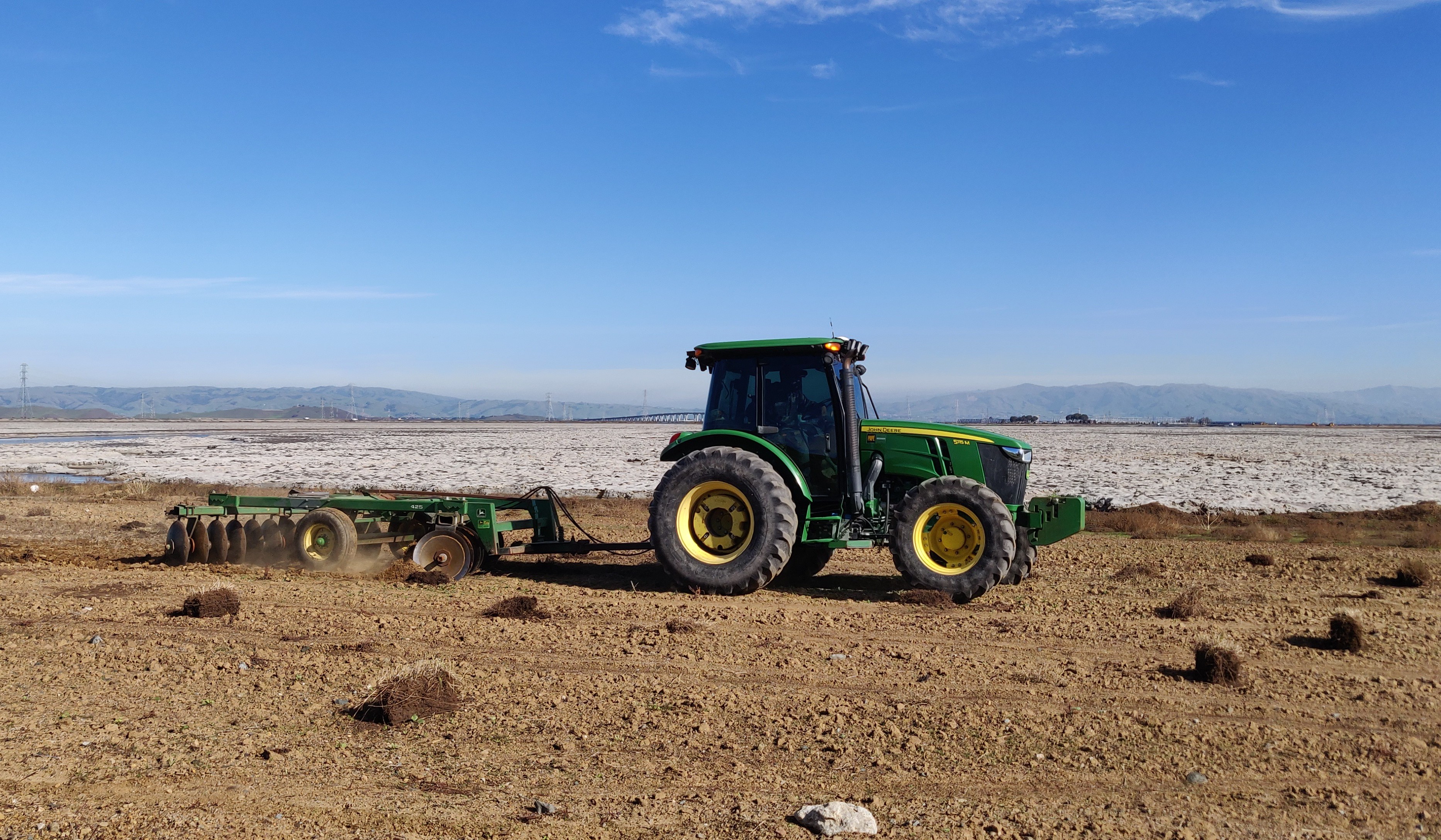A New Technique to Scale Up Our Revegetation Efforts
In my most recent blog post, I wrote about what habitat transition zones are, why these slopes rising from tidal marsh are important parts of our Restoration Project, and introduced Save The Bay’s vital role in making them ecologically rich areas of native plants that make more complete and complex marshes. This time around, guest blogger Jessie Olson, Habitat Restoration Director of Save The Bay, will dig into the details and share more of how they have done their work at our Ravenswood ponds. Take it away, Jessie!
Save The Bay has a history of successful restoration efforts that take a community-based approach to revegetation. These student and volunteer programs can spark a lifelong love of shoreline open space by giving community members an opportunity to participate in hands-on restoration. These programs also encourage participants to invest in the protection of tidal marsh and related habitats by voting for elected leaders and policies that prioritize the health of the Bay. Until recently, our projects have been small scale and implemented over long periods of time.
But now, to meet the urgency of sea level rise and climate change, we need to restore more acres of habitat transition zone and marsh-edge habitats more quickly. To do so, we realized that we needed to think beyond what our staff and volunteers were capable of hand-planting in a season. To broadly revegetate larger sites, we needed methods that would reduce the cost and labor associated with the process. This is where the idea of “farming” native plants came in – and the South Bay Salt Pond Restoration Project’s recently built habitat transition zone between Ravenswood Pond R4 and the City of Menlo Park’s Bedwell Bayfront Park (“the Pond R4 habitat slope”) was the perfect site to test it out.
Borrowing from concepts used not only by farmers but also by indigenous tribes, Save The Bay and ecological consultant Peter Baye planned to grow native broad-leaf and grass species that were historically common on the edges of San Francisco Bay. These are resilient species with the ability to form dense, drought-tolerant sod that, once well-established, is nearly impenetrable to the colonization of invasive annual species.
To grow large numbers of plants to place on the 10-acre R4 habitat slope, Save The Bay built a raised-bed nursery close to the site on a parcel of land owned by the West Bay Sanitary District, which allowed us to use that space at no cost. We constructed 82 raised beds, similar to what you might build to grow vegetables or herbs in at home. We then filled these beds with native, perennial species collected from South Bay populations as close to the restoration site as possible.
In fall 2021, prior to the rain, our habitat restoration team began to harvest the nursery's native plants and break up the sod so it was ready to be mixed in by a farming contractor. The process of digging the sod pieces out of the beds was both time- and labor-intensive but produced massive amounts of propagules (clippings or cuttings that will regrow when planted) – multitudes more than what is possible with traditional container plants. After we delivered the sod pieces to the planting site, Frank Imhof, a local farmer, used a tractor with a special attachment to mix the plant material into the soil of the R4 habitat slope. We followed that by hand-spreading a native, annual seed mix. Then we planted additional species throughout the slope to add diversity and functionality.
With increasing drought, a global pandemic, and project delays, the work of habitat restoration is a constant challenge and test of our flexibility and patience. After growing plants in the beds for a few years, we moved and replanted tens of thousands of propagules between November 2021 and March 2022.
What is remarkable is that our early monitoring indicates that these experimental “farming” methods are effective. Now, much of the plant material, from sod to annual seeds, is established on the site and producing healthy vegetative growth. We intend to replicate these techniques next fall at our second Ravenswood planting site. We hope that what we’ve learned can inform restoration practitioners elsewhere.
Our role at Save The Bay is to distill the incredible science done by our partners, like the South Bay Salt Pond Restoration Project, into exciting and educational communication with which we may empower our community to take the protection and stewardship of tidal marsh and adjacent habitats into their own hands. We hope that hand-planting a native species into a habitat transition zone is the first step toward lifelong advocacy for the remarkable place we call home.
In the coming year, we will need help from volunteers to remove invasive plants and maintain the planted slope. After a long COVID-related hiatus, we plan to reintroduce our popular public programs this summer and welcome volunteers back to the shoreline. We’d love to see you there! Learn more about our volunteer opportunities here.


